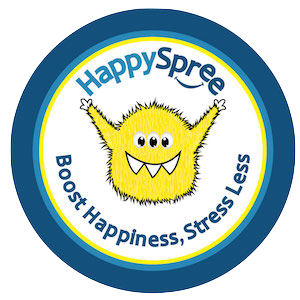Meditation improves mental and physical health, and it also boosts happiness. If you’ve never tried meditation this Candy or Fruit Meditation provides an easy introduction and it only takes 5 minutes. Or, if you’re a meditation pro, you already know taking time for meditation makes you feel great.
So, give your soul a treat. Grab a piece of candy or fruit and try our yummy 5-Minute Candy or Fruit Meditation. Click on the video below or scroll down to read how this meditation works.
5 Minute Chocolate Candy or Fruit Meditation
💕Treat yourself to a Valentine's present.Grab some candy, or fruit, and dedicate 5 minutes to lower stress, increase happiness and rewire your brain with this fun and easy mindfulness treat …
Posted by HappySpree Breakup Recovery Challenge on Friday, February 14, 2020
Chocolate, Soft Candy or Fruit Meditation Experience
Did you ever gulp down a meal and not notice how it tasted? We all get busy sometimes, and often I eat without enjoying my food, or even tasting it. If you want to try meditation and develop a new appreciate for food, take three minutes for this Taste Meditation.
I selected chocolate for my taste meditation and the chocolaty deliciousness amazed me. Next, I had to try it with a caramel, then pomegranate seeds and finally a barbecue potato chip (my favorite indulgence). I wanted to skip the meditation and gobble up the whole bag of chips, but I made myself behave.
Taste meditation made me realize how much I missed when gulping food.
You can record the meditation script (below) using your phone or computer and play it back so you can enjoy the experience by yourself. Alternately, have a friend or family member read the script while you do the meditation, then trade places.
Easy Meditation Script
Select a piece of soft candy, like a chocolate, a caramel, a jellybean; or alternately, a piece of fruit. Bring your item to a comfortable sitting location. Choose a chair or cushion or somewhere comfortable to sit.
As you sit unwrap your item, if needed. Hold your candy or fruit loosely in your hand and allow your body to relax. Feel the support of the earth on your body.
Close your eyes. Bring your attention inward and focus on your breath. Breathe slowly in and out, in and out, in and out. Allow your body to relax more with each breath.
Now, bring your attention to your candy or fruit. Feel the weight in your hand. Is it smooth or textured? Soft or firm?
Open your eyes and notice your item’s shape and color. Are there any markings or textures?
You may feel tempted to devour your item but resist this urge. Slowly bring your item up to your nose. Is there a smell? If there is an aroma, sit for a few moments and appreciate it. This may increase your cravings but you’re strong.
Bring the candy or fruit to your mouth and take a small bite, but don’t swallow. What flavor do you taste? Explore the item with your tongue.
Let your item melt in your mouth or chew it. Does the taste change as your item moves around in your mouth? How do you feel? What other sensations are there?
Notice any memories this experience brings up in your mind. Take a moment to appreciate them.
Swallow the item and notice any new sensations. Next, place the remaining candy or fruit in your mouth. Appreciate the tastes and sensations as you explore it.
When you’re ready, swallow the food. Notice any lingering tastes and any feelings you might have.
Next, bring your attention back to your breath. Do you feel different than when you began the meditation?
Slowly bring your awareness back to the room. Notice any sounds you might hear. Feel your body sitting, and notice the support of the earth underneath you.
When you feel ready, open your eyes.
(End of script)

Meditation Gets a New Fan
Skeptical me had thought meditation too “woo-woo”, but I wanted to experience a variety of happiness practices. Taste meditation sounded interesting and easy with only a 5-minute time commitment so I didn’t have much to lose. Plus, how could I go wrong with eating chocolate?
It surprised me how much I enjoyed my taste meditation experience. Slowing down the eating process intensified my enjoyment of chocolate and I noticed more sensations than when I gobbled down food. When my teenage daughter tried his meditation with a piece of fruit she said, “Mom, that was the yummiest grape I ever had!”
Many food items seemed to taste better after this meditation because I was slowing down to savor foods. I started closing my eyes to savor special tastes and intensified the taste. I appreciate and enjoy my food more.
I loved my taste of meditation and this made me curious. I tried other meditations, and I confess … I enjoyed them all — even my group meditation session. I had thought we would meditate for a few minutes and spend most of the hour talking about our experience.
Wrong!
When the moderator announced we would be meditating for 40 minutes I thought I might die.
How would fidgety me survive sitting still for that long? Surprise … I loved it.
So if a jaded, moldy-oldie like me loves meditation, you might too. I wrote this script in hopes of tempting people interested in trying meditation or skeptical but open about trying meditation, or for anyone needing a relaxing break, wanting to savor life more, or people interested in increasing happiness. If any or all apply to you try this tasty experiment.










